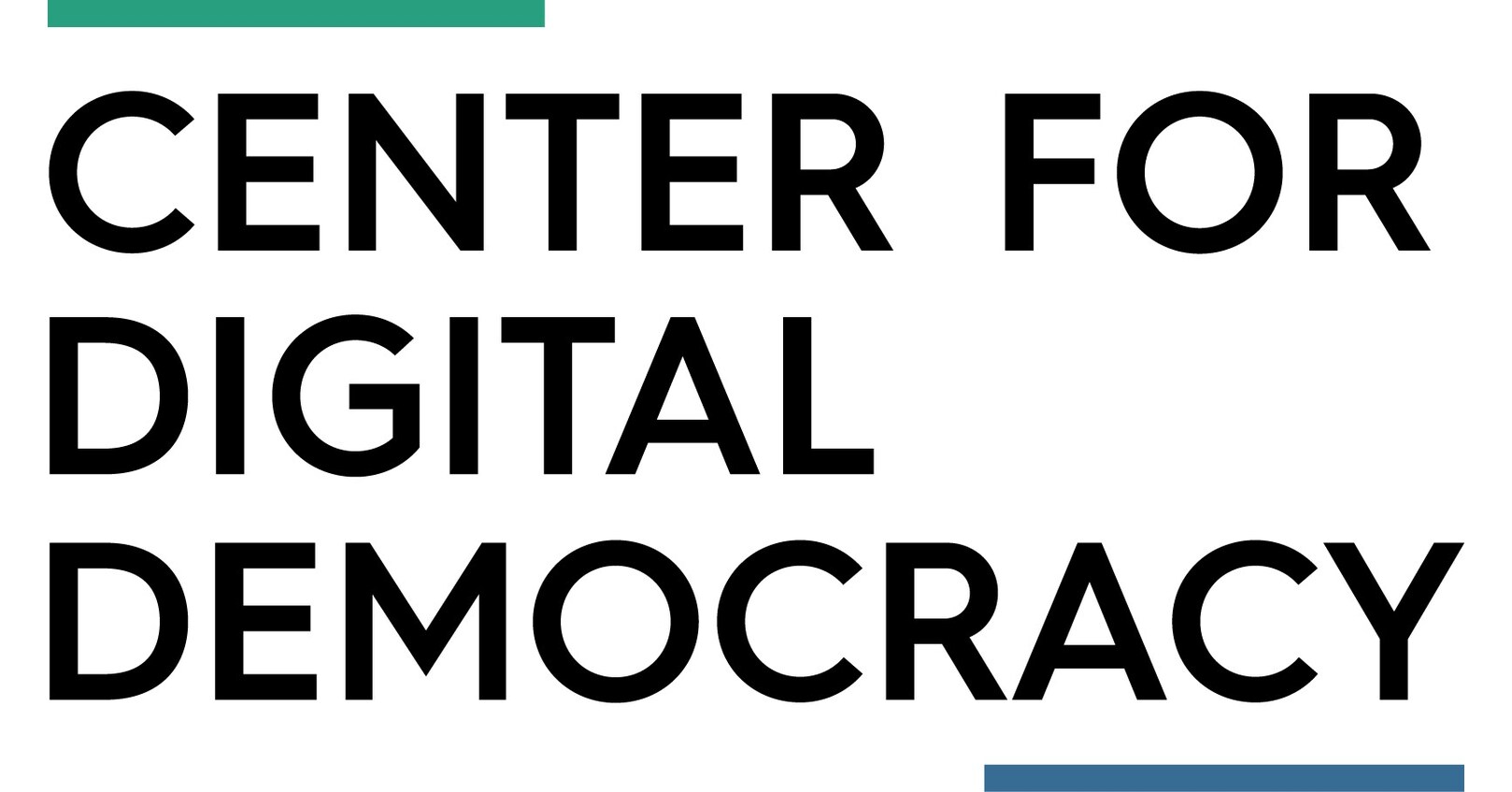Digital Privacy and Consumer Protection Group Calls on FTC, FCC and California Regulators to Investigate Connected TV Practices
WASHINGTON, Oct. 7, 2024 /PRNewswire/ — The Connected TV (CTV) video streaming industry in the U.S. operates a massive data-driven surveillance apparatus that has transformed the television set into a sophisticated monitoring, tracking and targeting device, according to a new report from the Center for Digital Democracy (CDD). How TV Watches Us: Commercial Surveillance in the Streaming Era documents how CTV captures and harvests information on individuals and families through a sophisticated and expansive commercial surveillance system, deliberately incorporating many of the data-gathering, monitoring, and targeting practices that have long undermined privacy and consumer protection online.
The report highlights a number of recent trends that are key to understanding today’s connected TV operations:
- Leading streaming video programming networks, CTV device companies and “smart” TV manufacturers, allied with many of the country’s most powerful data brokers, are creating extensive digital dossiers on viewers based on a person’s identity information, viewing choices, purchasing patterns, and thousands of online and offline behaviors.
- So-called FAST channels (Free Advertiser-Supported TV)—such as Tubi, Pluto TV, and many others—are now ubiquitous on CTV, and a key part of the industry’s strategy to monetize viewer data and target them with sophisticated new forms of interactive marketing.
- Comcast/NBCU, Disney, Amazon, Roku, LG and other CTV companies operate cutting-edge advertising technologies that gather, analyze and then target consumers with ads, delivering them to households in milliseconds. CTV has unleashed a powerful arsenal of interactive advertising techniques, including virtual product placement inserted into programming and altered in real time. Generative AI enables marketers to produce thousands of instantaneous “hypertargeted variations” personalized for individual viewers.
- Surveillance has been built directly into television sets, with major manufacturers’ “smart TVs” deploying automatic content recognition (ACR) and other monitoring software to capture “an extensive, highly granular, and intimate amount of information that, when combined with contemporary identity technologies, enables tracking and ad targeting at the individual viewer level,” the report explains.
- Connected television is now integrated with online shopping services and offline retail outlets, creating a seamless commercial and entertainment culture through a number of techniques, including what the industry calls “shoppable ad formats” incorporated into programming and designed to prompt viewers to “purchase their favorite items without disrupting their viewing experience,” according to industry materials.
The report profiles major players in the connected TV industry, along with the wide range of technologies they use to monitor and target viewers. For example:
- Comcast’s NBCUniversal division has developed its own data-driven ad-targeting system called “One Platform Total Audience.” It powers NBCU’s “streaming activation” of consumers targeted across “300 end points,” including their streaming video programming and mobile phone use. Advertisers can use the “machine learning and predictive analytics” capabilities of One Platform, including its “vast… first-party identity spine” that can be coupled with their own data sets “to better reach the consumers who matter most to brands.” NBCU’s “Identity graph houses more than 200 million individuals 18+, more than 90 million households, and more than 3,000 behavioral attributes that can be accessed for strategic audience targeting.”
- The Walt Disney Company has developed a state-of the-art big-data and advertising system for its video operations, including through Disney+ and its “kids” content. Its materials promise to “leverage streaming behavior to build brand affinity and reward viewers” using tools such as the “Disney Audience Graph—consisting of millions of households, CTV and digital device IDs… continually refined and enhanced based on the numerous ways Disney connects with consumers daily.” The company claims that its ID Graph incorporates 110 million households and 260 million device IDs that can be targeted for advertising using “proprietary” and “precision” advertising categories “built from 100,000 [data] attributes.”
- Set manufacturer Samsung TV promises advertisers a wealth of data to reach their targets, deploying a variety of surveillance tools, including an ACR technology system that “identifies what viewers are watching on their TV on a regular basis,” and gathers data from a spectrum of channels, including “Linear TV, Linear Ads, Video Games, and Video on Demand.” It can also determine which viewers are watching television in English, Spanish, or other languages, and the specific kinds of devices that are connected to the set in each home.
“The transformation of television in the digital era has taken place over the last several years largely under the radar of policymakers and the public, even as concerns about internet privacy and social media have received extensive media coverage,” the report explains. “The U.S. CTV streaming business has deliberately incorporated many of the data-surveillance marketing practices that have long undermined privacy and consumer protection in the ‘older’ online world of social media, search engines, mobile phones and video services such as YouTube.” The industry’s self-regulatory regimes are highly inadequate, the report authors argue. “Millions of Americans are being forced to accept unfair terms in order to access video programming, which threatens their privacy and may also narrow what information they access—including the quality of the content itself. Only those who can afford to pay are able to ‘opt out’ of seeing most of the ads—although much of their data will still be gathered.”
The massive surveillance and targeting practices of today’s contemporary connected TV industry raise a number of concerns, the report explains. For example, during this election year, CTV has become the fastest growing medium for political ads. “Political campaigns are taking advantage of the full spectrum of ad-tech, identity, data analysis, monitoring and tracking tools deployed by major brands.” While these tools are no doubt a boon to campaigns, they also make it easy for candidates and other political actors to “run covert personalized campaigns, integrating detailed information about viewing behaviors, along with a host of additional (and often sensitive) data about a voter’s political orientations, personal interests, purchasing patterns, and emotional states. With no transparency or oversight,” the authors warn, “these practices could unleash millions of personalized, manipulative and highly targeted political ads, spread disinformation, and further exacerbate the political polarization that threatens a healthy democratic culture in the U.S.”
“CTV has become a privacy nightmare for viewers,” explained report co-author Jeff Chester, who is the executive director of CDD. “It is now a core asset for the vast system of digital surveillance that shapes most of our online experiences. Not only does CTV operate in ways that are unfair to consumers, it is also putting them and their families at risk as it gathers and uses sensitive data about health, children, race and political interests,” Chester noted. “Regulation is urgently needed to protect the public from constantly expanding and unfair data collection and marketing practices,” he said, “as well as to ensure a competitive, diverse and equitable marketplace for programmers.”
“Policy makers, scholars, and advocates need to pay close attention to the changes taking place in today’s 21st century television industry,” argued report co-author Kathryn C. Montgomery, Ph.D. “In addition to calling for strong consumer and privacy safeguards,” she urged, “we should seize this opportunity to re-envision the power and potential of the television medium and to create a policy framework for connected TV that will enable it to do more than serve the needs of advertisers. Our future television system in the United States should support and sustain a healthy news and information sector, promote civic engagement, and enable a diversity of creative expression to flourish.”
CDD is submitting letters today to the chairs of the FTC and FCC, as well as the California Attorney General and the California Privacy Protection Agency, calling on policymakers to address the report’s findings and implement effective regulations for the CTV industry.
CDD’s mission is to ensure that digital technologies serve and strengthen democratic values, institutions and processes. CDD strives to safeguard privacy and civil and human rights, as well as to advance equity, fairness, and community.
Contact: Jeff Chester, 202-494-7100 [email protected]
SOURCE Center for Digital Democracy
WANT YOUR COMPANY’S NEWS FEATURED ON PRNEWSWIRE.COM?
440k+
Newsrooms &
Influencers
9k+
Digital Media
Outlets
270k+
Journalists
Opted In







